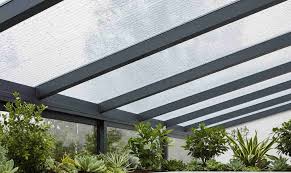Acryldach: The Modern Roofing Solution That Combines Style and Strength
When it comes to roofing materials, homeowners and builders are always looking for the perfect balance of durability, appearance, and cost-effectiveness. One material that has gained remarkable attention in recent years is the Acryldach — an acrylic-based roofing solution known for its clarity, resilience, and versatility.
In this guide, we’ll explore everything you need to know about Acryldach, from what it is to why it’s becoming a top choice for modern architecture and home design.
What Is Acryldach?
The term Acryldach literally translates to “acrylic roof.” It refers to roofing panels or sheets made from acrylic polymers (often polymethyl methacrylate, or PMMA). These sheets are engineered to provide excellent transparency, weather resistance, and UV protection, making them ideal for both residential and commercial projects.
Acryldach can appear in various forms, including:
- Transparent panels for patios, greenhouses, or skylights.
- Colored or tinted sheets to reduce glare and enhance aesthetic appeal.
- Corrugated acrylic roofing that mimics traditional roof waves while maintaining lightweight properties.
Key Benefits of Using Acryldach
1. Outstanding Durability
Acryldach is impact-resistant and can withstand harsh environmental conditions — from heavy rain to intense sun exposure. Unlike traditional roofing materials that may corrode or crack over time, acrylic roofs maintain their integrity for many years.
2. Crystal Clear Transparency
One of the defining features of an Acryldach is its high light transmission. These roofs allow up to 90% of natural light to pass through, making interiors brighter and reducing the need for artificial lighting during the day.
3. UV and Weather Resistance
High-quality Acryldach panels come with UV protection, preventing yellowing and degradation over time. This ensures your roof remains clear and vibrant even under constant sunlight.
4. Lightweight and Easy to Install
Compared to glass or metal roofing, acrylic sheets are much lighter. This makes transportation, cutting, and installation simpler and less labor-intensive — perfect for DIY enthusiasts and professional builders alike.
5. Versatile Design Options
Acryldach is available in multiple colors, thicknesses, and surface textures. Whether you want a sleek modern finish for a conservatory or a rustic look for a garden roof, the options are virtually limitless.
Common Applications of Acryldach
Acryldach’s versatility makes it suitable for a wide range of uses. Here are some of the most popular:
Greenhouses and Garden Structures
Due to its light transmission and UV resistance, Acryldach is perfect for greenhouses, garden sheds, and pergolas, ensuring your plants get ample sunlight without overheating.
Terraces and Verandas
For homeowners seeking to create bright, airy outdoor spaces, acrylic roofing provides shade while maintaining an open, natural feel.
Commercial Buildings and Skylights
Acryldach is increasingly used in commercial architecture — from shopping centers to offices — where natural lighting enhances aesthetics and energy efficiency.
Carports and Garages
Because of its strength and weatherproof qualities, it’s an excellent material for carports or vehicle shelters, offering protection without the heaviness of traditional roofing.
Acryldach vs. Polycarbonate Roofing
While both acrylic and polycarbonate are popular transparent roofing materials, there are key differences:
| Feature | Acryldach (Acrylic Roof) | Polycarbonate Roof |
|---|---|---|
| Transparency | Higher clarity (up to 90%) | Slightly lower (80–85%) |
| UV Resistance | Excellent, long-lasting | Good, may require coating |
| Impact Resistance | Strong, but less flexible | Extremely strong and flexible |
| Scratch Resistance | Better than polycarbonate | Scratches more easily |
| Cost | Generally more affordable | Slightly more expensive |
If your priority is clarity and aesthetics, Acryldach is the superior choice. For impact resistance (like hail-prone areas), polycarbonate might perform slightly better.
Installation Tips for Acryldach
To make the most of your Acryldach installation, keep these practical tips in mind:
- Ensure Proper Support Structure
Use a stable frame (like aluminum or treated wood) to support the panels securely. - Leave Space for Expansion
Acrylic expands slightly with heat — so leave small gaps between sheets to avoid warping. - Use Correct Fasteners
Choose rubber-sealed screws to prevent water leakage and cracking around drill points. - Avoid Harsh Cleaners
Clean Acryldach panels with mild soap and a soft cloth to maintain their shine and clarity. - Handle with Care During Installation
Acrylic sheets are tough but can scratch if dragged or handled roughly.
Design Ideas with Acryldach
- Modern Skylight Designs: Combine Acryldach with steel frames for a contemporary industrial look.
- Indoor Greenhouses: Use tinted panels to control sunlight and create cozy plant corners.
- Outdoor Lounges: Mix transparent and frosted acrylic sheets for aesthetic patterns.
- Roof Canopies: Create striking covered walkways that blend sunlight and shelter beautifully.
Eco-Friendly Roofing Choice
Acryldach isn’t just about aesthetics and performance — it’s also an environmentally conscious option. Acrylic is recyclable, and its long lifespan means less frequent replacements, reducing waste over time. Moreover, by maximizing natural light, it helps lower electricity consumption in homes and offices.
Maintenance and Longevity
With minimal upkeep, Acryldach can last 20–30 years or more. Regular cleaning with non-abrasive materials and occasional inspection of fittings can ensure your roof stays in perfect condition. Its non-corrosive nature also means you won’t have to worry about rust or rot.
Key Takeaways
- Acryldach is an acrylic-based roofing solution combining beauty, durability, and light transmission.
- It’s ideal for greenhouses, patios, skylights, and carports.
- Offers UV protection, weather resistance, and easy maintenance.
- Available in multiple colors, designs, and finishes to match any architectural style.
- Provides a sustainable and long-lasting alternative to traditional roofing.
FAQs About Acryldach
1. Is Acryldach suitable for all climates?
Yes. It performs well in both hot and cold environments due to its UV stability and weather resistance.
2. Can I install Acryldach myself?
Absolutely. It’s lightweight and easy to cut, making it great for DIY installations, as long as you follow safety and spacing guidelines.
3. Does Acryldach turn yellow over time?
High-quality UV-treated acrylic panels resist yellowing, maintaining clarity for many years.
4. How does Acryldach compare to glass?
Acryldach is lighter, safer, and more impact-resistant than glass — making it a preferred choice for modern structures.
5. Can it be painted or tinted?
Yes. Acryldach can be factory-tinted or surface-coated in various colors depending on your design preference.
Final Thoughts
Acryldach has become a go-to roofing material for homeowners, architects, and builders seeking a blend of style, functionality, and durability. Whether you’re upgrading your patio, constructing a greenhouse, or designing a contemporary skylight, acrylic roofing offers the perfect balance of transparency, strength, and long-term value.
In a world moving toward sustainable and modern construction, Acryldach stands as a clear choice — literally and figuratively.







